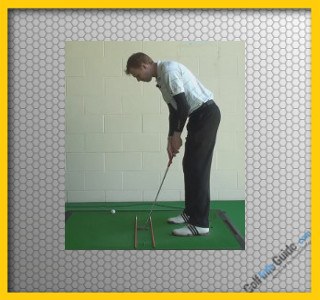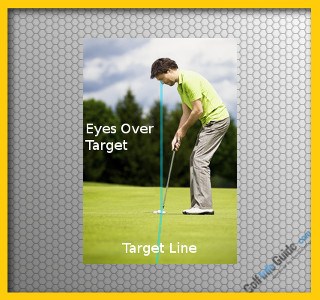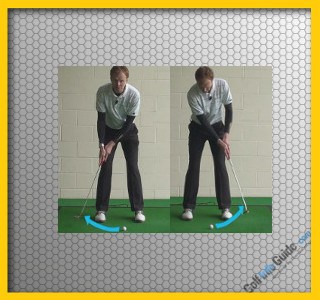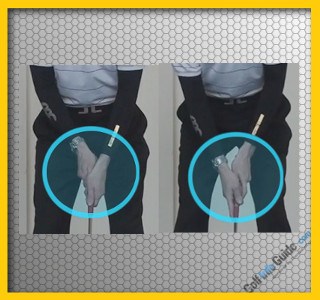Unlike most areas of golf, putting seems to look very easy. But, it’s not. Putting is definitely the most neglected part of the game when it comes to practice, but the putter is used more than any club in the bag. For some, the putter is used approximately 50% of the round. The Driver is used approximately 19% of the round. So why do we spend so much time practicing our tee shots? If we put 50% more time into practicing on the green, one would think we should improve at least 5 shots.
Pushing Putts is a common flaw for many golfers. A push will most likely happen when a golfer has a shorter putt from inside ten feet. The push for a right handed golfer is when the putter face at impact is open to the target line either from an incorrect swing path or there was too much hands and wrists in the stroke. When a putt is pushed, it will have a loss of speed control and it will finish short or long depending on which flaw was responsible for the stroke.
Under pressure is when the pushed putt often surfaces. This can be referred to as the “yips”. The following are simple tips that can help relieve some of these untimely misses.

One of the odd training aids you can find in most professional’s golf bags or trunks, is a yard stick. This is predominantly used for putting practice. A metal yard stick is approximately 3.5 feet long, when used in practice it can help develop perfect club face alignment, solid contact and an on line roll. The way to use this drill is find a relatively flat and straight 3 foot putt. Put the yard stick down at the lip of the hole and place a ball on the stick approximately half a foot from the end (some people will manually put a notch in the stick so the ball doesn’t roll off). Gently line up your putter square to the stick and behind the ball. Make a stroke and if the ball remains on the yard stick and goes in, you were very square through impact. If you make a poor stroke the ball will go off the stick and miss the hole. This drill will teach you a smooth putting stroke while keeping the face square to your target line.

Tip #2 Eyes Directly Over the Line
A common flaw we see with a pushed putt is that the eyes of the player are not directly over the target line. When the eyes are a few inches to severely inside the target line it results in two things. First, it gives a different perspective of alignment causing the player to line the putter face open. Second, it promotes an in to out putting stroke often resulting in a push. The opposite effect occurs when the eyes are lined up outside the target line. A great way to see where your eyes are in relation to the target line is to lay a club on the ground and set up with the putter on the club shaft. Next, grab a golf ball and get into your putting posture. Take the ball and hold it up between your eyes on the bridge of your nose. Drop it. If it hits inside the club shaft, your eyes are inside the line. If the ball strikes the club shaft, your eyes are on line. Having your eyes directly over the target line will allow you to make a square stroke and see the line of the putt better.

Tip #3 Left hand down the target line
If you struggle with pushing putts, a great tip to get the ball rolling on target is to make sure the back of your left hand (right hand for left handed golfers) keeps moving down the target line through impact. The left hand in putting controls the clubface and when it’s kept quiet and moving down the line, we have a greater chance of making solid and square contact.

Grip pressure in putting is very important. We don’t want to be too tight and we don’t want to be too loose. In high stress situations during a game of golf, whether it’s for your career low round or to make your fifth birdie in a row, you will naturally grip the club tighter due to adrenaline. If you can have a firm grip pressure, you’ll have a better chance of making a nice fluid stroke. Sometimes players grip it much too loose which results in active hands and wrists during the stroke. When we grip it firm or simply a 5 on a scale of 1 to 10 with 10 ten being tightest, it activates our forearms and allows us to make a one piece square stroke.






